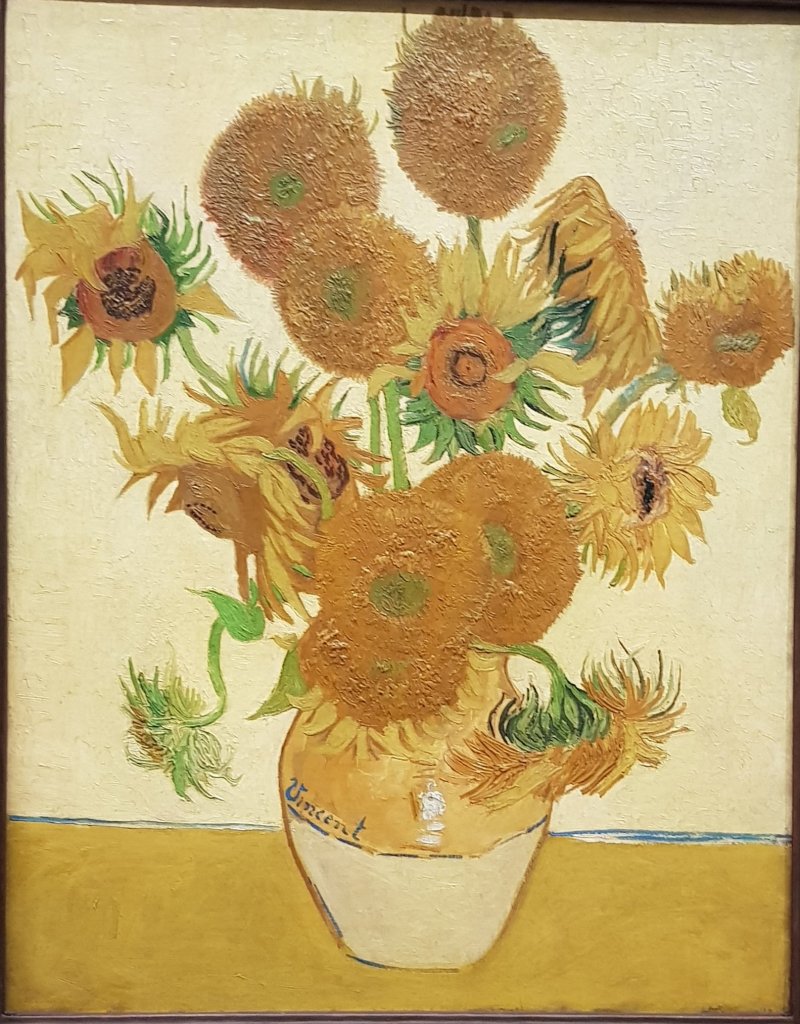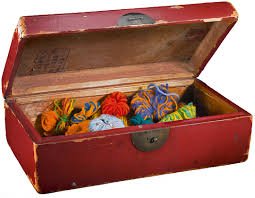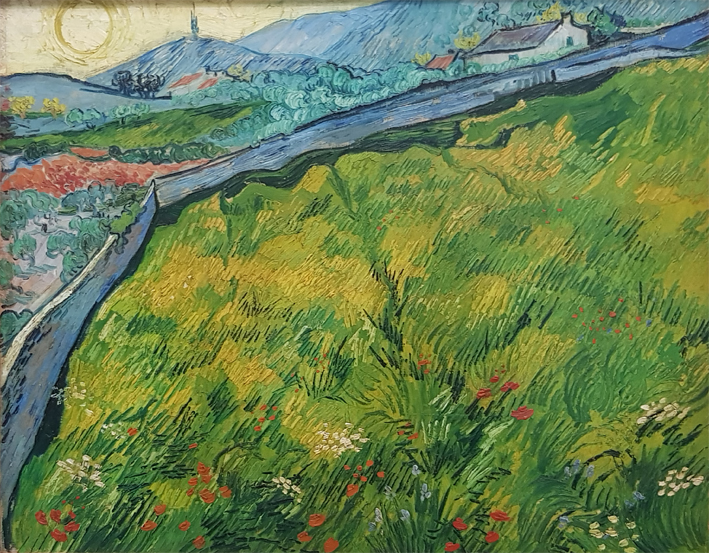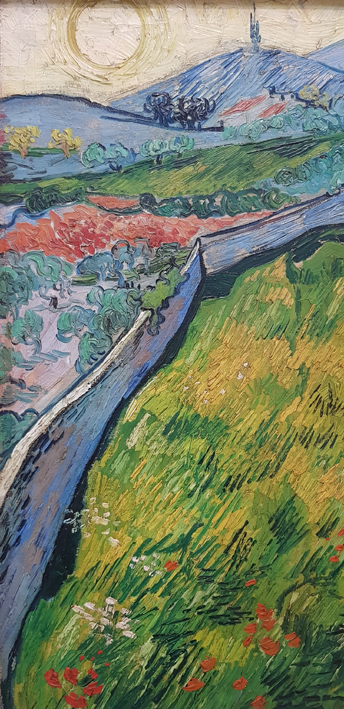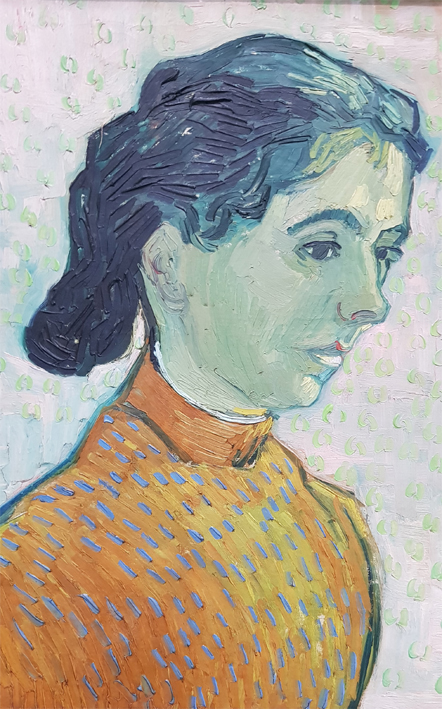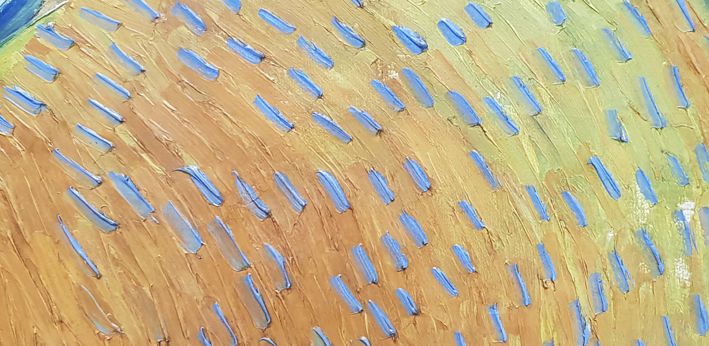From March to June 2021 the National Gallery of Australia is hosting a raft of paintings, including many masterpieces from the National Gallery, London, in the Boticelli to Van Gogh exhibition. I have to say masterpieces because there is not a single work by a female artist is included in this show! Really? Yes, the National Gallery London is a very blokey affair, although I would have been happy to see their works by Rosalba Carriera, Artemesia Gentilleschi, Rosa Bonheur or Berthe Morisot. Rather ironic as the Know My Name exhibition of women artists is taking up almost all of the rest of the main floor of the gallery at present.
I have purchased a season ticket that allows me to visit the exhibition as many times as I can. My first post focused on Van Gogh’s Sunflowers 1888, but I must admit I have spent a lot more time looking elsewhere in the exhibition.
By drawing my way through the exhibition I can spend time looking closely at the paintings trying to learn what I can by copying. Though the reality is that a pencil (the only drawing tool allowed in the Gallery), is not always the right tool to capture a finely wrought portrait.
My first sketches included Joseph Wright of Derby’s double portrait of Mr and Mrs Thomas (Mary Barlow) Coltman, c. 1770-72 (NG6496) and Frans Hal’s Portrait of a Woman with a Fan, c. 1640 (NG 2529).

The Coltman’s were painted in a ‘conversation piece’ portrait, which was a popular convention of the time, showing the couple in a charmingly relaxed pose, (something that the Curator Susan Foister notes that would have required quite some forethought on Wright’s part). It is a portrait of ease and nicely observed detail, including Mary’s horse with it’s ears back, because their spaniel (not in my sketch) is nipping at it.
Alas my sketch of the Woman with a Fan was rather less successful. I have turned the sitter from a young woman into a middle-aged version of herself! The figure itself and dress with the lace collar and cuffs I am quite happy with.

I made a somewhat better go of this work the next time I visited. At least there is some vague resemblance in this version, although she still looks much older than she does in Hal’s portrait.
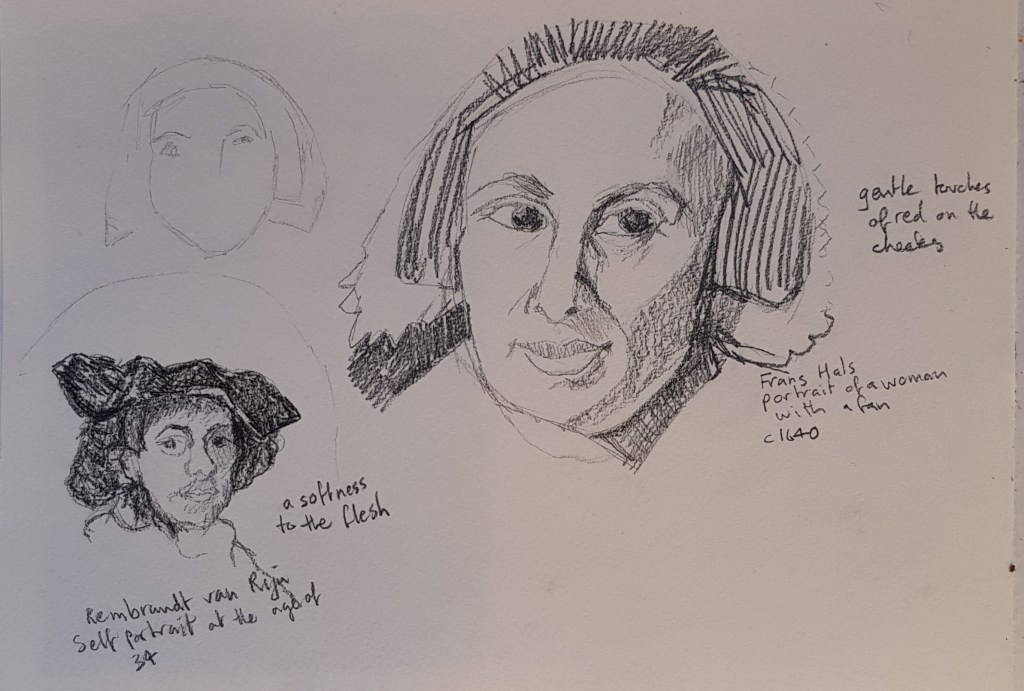
Stay tuned for Part 2, where we meet the Duke and the Actress!

